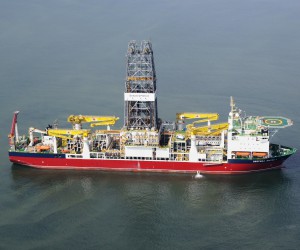There are multiple logistical challenges associated with mobilising a drilling rig maintenance crew to an offshore location.
DCD MARINE was successfully awarded the maintenance and upgrading project for Odfjell Drilling’s jointly-owned Deepsea Metro 1 dynamic positioning drill rig. This followed a site inspection onboard the rig off the coast of Mtwara (Tanzania) in late September 2012.
The project spans over a duration of 120 and 150 days and entails the installation of a 10" relief pipe line, a 4" diesel line, as well as cable trays and cable ladders. “DCD MARINE with assistance from subcontractors, will also fabricate step-overs and platforms and undertake the installation of wires for various well test equipment. In addition, a 3m x 3m x 800mm high methanol tank will be fabricated in two halves and air-freighted to Mtwara for onboard installation,” explains Denver Arendse, senior project manager for DCD MARINE.
“DCD MARINE has been requested to provide sea fastening of weld test equipment for various Odfjell Drilling contractors, for instance, Schlumberger and Optima. The team will, additionally, provide the fibre optic electrical installation and terminations of weld test equipment,” explains Gerry Klos, general manager for DCD MARINE. A total of 23 tons of material will be supplied to facilitate the scope of work.
In order to meet the time challenges imposed by the client, the teams were deployed from South Africa to site in various stages with each team completing a 30-40 day stint onboard the vessel.
To accommodate the fast turnaround time required by the client, the complement of seven electricians, three scaffolders, two boilermakers, two pipe fitters, three welders and the Project Manager, slept onboard the rig and worked a 12-hour shift daily. “The heat on the rig is a major challenge, so we adopted the rig’s shift rota that started at noon and was completed at midnight,” Klos continues.
Due to the urgency of the project equipment and consumables were sent via air freight. In addition, four open top DNV (Det Norske Veritas) approved containers, containing the 23 tons of material, 12 tons of scaffolding material and 5 tons of DCD MARINE equipment, were transported using three trucks.
“Mobilising the correct amount of consumables to last for the duration of the project was a challenge. In some cases, we over-compensated to allow for any contingencies, however, if required additional consumables and equipment would be air freighted to Mtwara,” says Klos.
“We also had to co-ordinate the departure of the personnel to coincide with the arrival of the material and to be on standby if there are any last-minute changes to the planning. By carefully planning and scheduling each aspect of the logistics for the project, we have successfully mitigated against any issues for a seamless delivery of manpower and materials to site,” Klos concludes.






